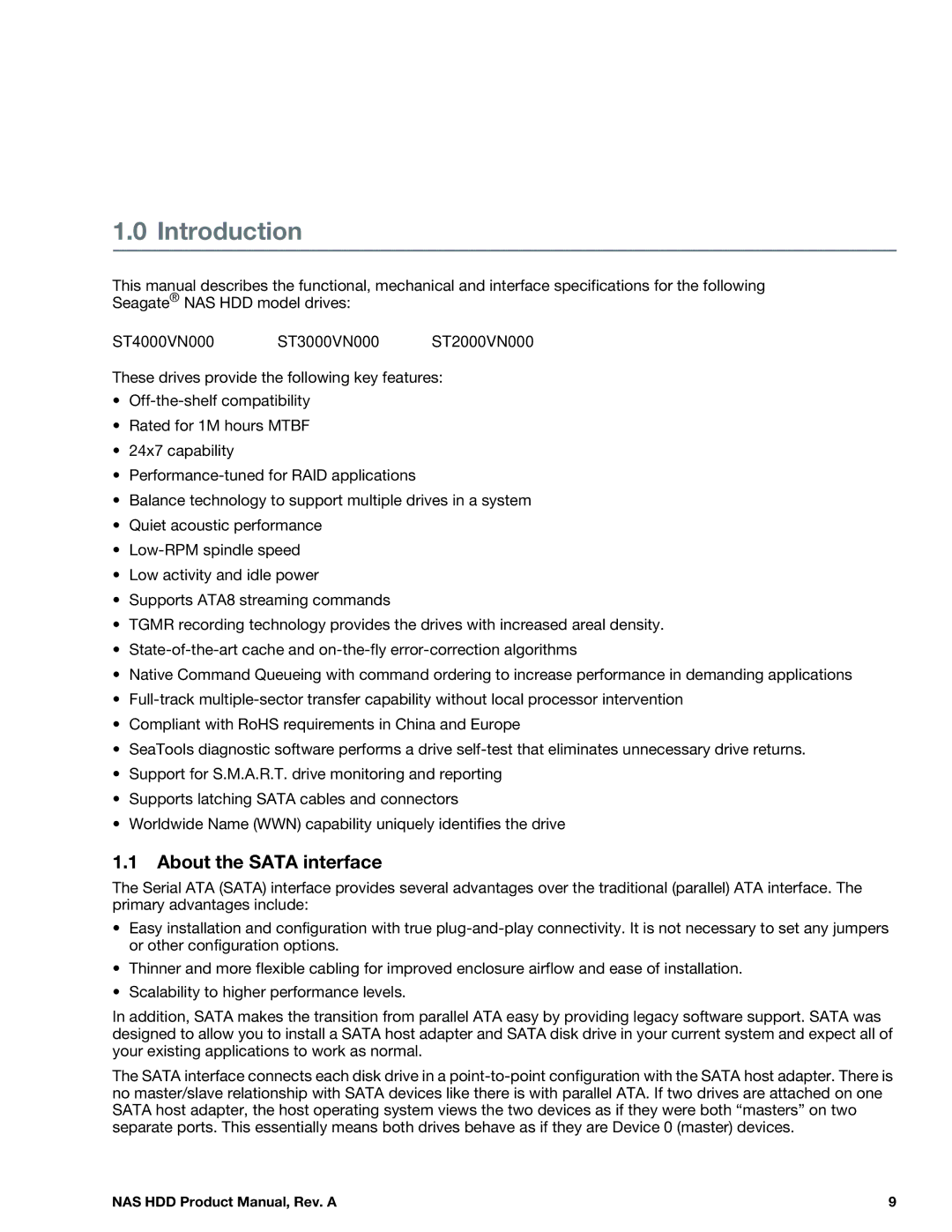1.0 Introduction
This manual describes the functional, mechanical and interface specifications for the following Seagate® NAS HDD model drives:
ST4000VN000 ST3000VN000 ST2000VN000
These drives provide the following key features:
•
•Rated for 1M hours MTBF
•24x7 capability
•
•Balance technology to support multiple drives in a system
•Quiet acoustic performance
•
•Low activity and idle power
•Supports ATA8 streaming commands
•TGMR recording technology provides the drives with increased areal density.
•
•Native Command Queueing with command ordering to increase performance in demanding applications
•
•Compliant with RoHS requirements in China and Europe
•SeaTools diagnostic software performs a drive
•Support for S.M.A.R.T. drive monitoring and reporting
•Supports latching SATA cables and connectors
•Worldwide Name (WWN) capability uniquely identifies the drive
1.1About the SATA interface
The Serial ATA (SATA) interface provides several advantages over the traditional (parallel) ATA interface. The primary advantages include:
•Easy installation and configuration with true
•Thinner and more flexible cabling for improved enclosure airflow and ease of installation.
•Scalability to higher performance levels.
In addition, SATA makes the transition from parallel ATA easy by providing legacy software support. SATA was designed to allow you to install a SATA host adapter and SATA disk drive in your current system and expect all of your existing applications to work as normal.
The SATA interface connects each disk drive in a
NAS HDD Product Manual, Rev. A | 9 |
